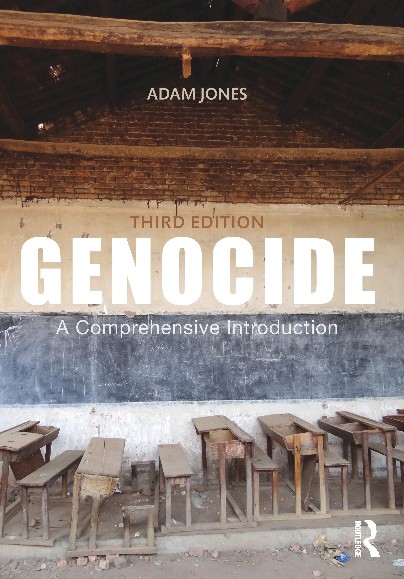 |
| "At a German military graveyard in Namibia's Waterberg national park, only a small plaque commemorates the Herero people." (Erin Conway-Smith/The Globe and Mail) |
By Geoffrey York
The Globe and Mail, October 21, 2012
"The tattered ribbon from a German wreath hangs inside a nearly empty museum in the bleak capital of the Herero people. 'Forgive us our trespasses,' say the fading words. It's as close to an apology as the Herero have ever received from the German government. But today their militant leaders want more than just a vague expression of regret for the death camps and extermination orders. They want their land back -- and they’re threatening to use violence to take it. In the bush and scrub of central Namibia, the descendants of the surviving Herero live in squalid shacks and tiny plots of land. Next door, the descendants of German settlers still own vast properties of 20,000 hectares or more. It’s a contrast that infuriates many Herero, fuelling a new radicalism here. Every year the Herero hold solemn ceremonies to remember the first genocide of history's bloodiest century, when German troops drove them into the desert to die, annihilating 80 per cent of their population through starvation, thirst, and slave labour in concentration camps. The Nama, a smaller ethnic group, lost half of their population from the same persecution. New research suggests that the German racial genocide in Namibia from 1904 to 1908 was a significant influence on the Nazis in the Second World War. Many of the key elements of Nazi ideology -- from racial science and eugenics to the theory of Lebensraum (creating 'living space' through colonization) -- were promoted by German military veterans and scientists who had begun their careers in South-West Africa, now Namibia, during the genocide. The parallels between the Nazi era and the German tactics in Africa are documented by David Olusoga and Casper Erichsen in their recent book, The Kaiser's Holocaust. They list some examples: 'concentration camps, the bureaucratization of killing, meticulous record-keeping of death tolls and death rates, the use of work as a means of extermination, civilians transported in cattle trucks then worked to death, their remains experimented upon by race scientists, and the identification of ethnic groups who had a future as slaves and those who had no future of any sort.'
Bizarre racial experiments, like those of the Nazi concentration camps, were performed on Herero and Nama prisoners. Thousands of their skulls were sent to Germany for experiments aimed at proving that Africans were anatomically similar to apes. Even the brown shirts of the Nazi storm troopers were originally designed as a desert camouflage uniform for German colonial troops in Africa. The Herero genocide began with the notorious 'extermination order' of 1904, issued by General Lothar von Trotha, commander of German forces in South-West Africa, after a failed Herero uprising. 'Within the German borders every Herero, with or without a gun, with or without cattle, will be shot,' the order proclaimed. The order was translated into the Herero language, written on small folded pieces of paper, and hung around the necks of captive Herero elderly people and children. Volleys of gunfire then forced the prisoners into the desert to give the message to their people. 'That nation must vanish from the face of the Earth,' Gen. von Trotha said. But the Germans eventually relented, and about 16,000 of the 80,000 Herero survived. Today, most of their descendants live in poverty. Their traditional culture is based on cattle-raising, yet they face overcrowding and land shortages in their shantytowns. They are increasingly resentful of the huge properties of the German farmers, whose ancestors arrived from 1908 to 1913 to carve up the 46 million hectares of expropriated land. 'We've been dispossessed,' says Vetaruhe Kandorozu, the elected regional councillor for Okakarara, unofficial capital of the Herero. 'We've been pushed into the semi-desert areas.' In August, at the commemoration of a 1904 battle between the Herero and the German troops, Mr. Kandorozu urged his people to organize themselves to take back their land in a Zimbabwe-style invasion of white-owned farms. His speech was cheered by many of the Herero, and he says he has received hundreds of calls from people wanting to join him. 'Even war veterans of the last liberation struggle have offered their support,' Mr. Kandorozu says, referring to the fight for Namibia’s independence from South Africa. He says he is willing to negotiate with the German farmers, if the Namibian government provides money to buy them out. 'But if the government doesn't listen to us, the next step is to invade the land,' he says. 'We can't be afraid to die. The German farmers know that their land was stolen from us, they know their fathers did not buy the land, yet they don't care.' [...]"
[n.b. Thanks to Owen Harrison for bringing this report to my attention.]














No comments:
Post a Comment
Please be constructive in your comments. - AJ